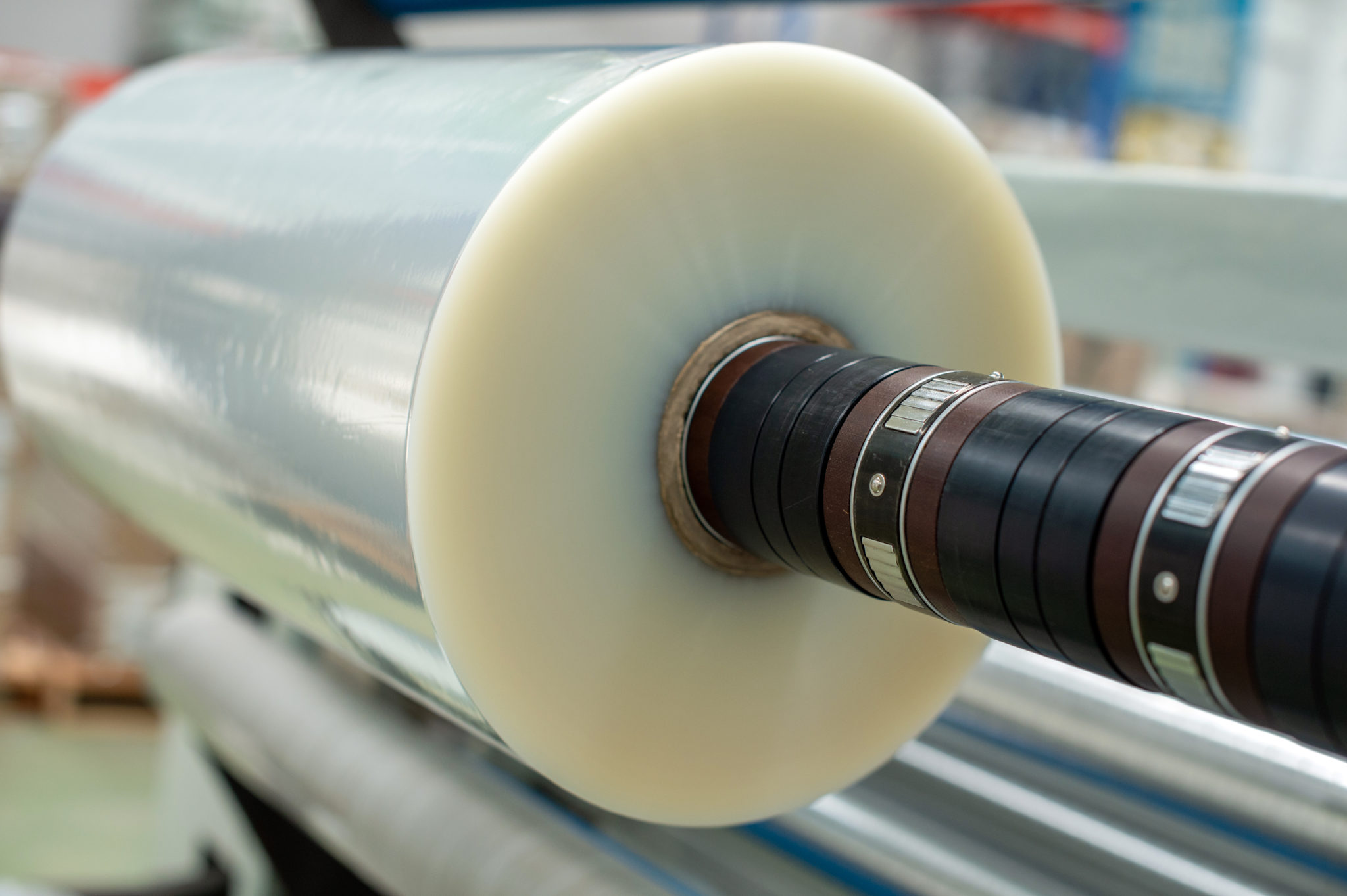
- > Search By Functions
- > Co-Extrusion
- > Search By Material
- > Search By Machines
- > Search By Machines
- > Search By Machines
What are you looking for?

Oriented Polypropylene (OPP) film is a type of thermoplastic polymer known for its clarity, strength, and excellent barrier properties. It is a subtype of polypropylene (PP) that has been stretched in one direction during manufacturing to improve its tensile strength and transparency. OPP film is widely used in packaging, particularly for snacks, stationery, labels, and overwraps.
High Clarity and Gloss: Offers excellent visual appeal, making it ideal for retail packaging.
Moisture Resistance: Protects products from humidity and moisture.
Good Printability: Allows for high-quality printing, which is crucial for branding.
Lightweight and Cost-Effective: Offers a good balance of performance and cost.
High Tensile Strength: Durable and tear-resistant in one direction.
Food packaging (e.g., potato chips, candy wrappers)
Cigarette overwraps
Gift wraps
Labels and stickers
Office supplies packaging
Yes, OPP film can technically be recycled, but it comes with challenges.
Contamination: Food residue, inks, and adhesives can complicate the recycling process.
Thinness and Flexibility: Difficult for traditional recycling machinery to process.
Sorting Issues: Often mixed with other films or plastics, which require separation.
Low Collection Rates: Thin films are rarely collected in standard curbside recycling programs.
Collection and Sorting: Collected through dedicated film recycling programs or industrial waste channels.
Cleaning and Shredding: Contaminants are removed, and the film is shredded into flakes.
Pelletizing: The clean flakes are melted and formed into plastic pellets with a plastic recycling machine.
Reprocessing: Pellets are used to make new plastic products like garbage bags, plastic lumber, or non-food packaging.
Mono-material Packaging: Reduces the need for separation by using only OPP materials.
De-inking and De-laminating Technology: Helps remove inks and adhesives for purer recycling streams.
Chemical Recycling: Breaks down plastics to their molecular level, making recycling of OPP more feasible.
Compostable Films: Alternatives like PLA are emerging but not suitable for all packaging needs.
Extended Producer Responsibility (EPR): Encourages manufacturers to design more recyclable products.
OPP film is a highly useful packaging material with many advantages, but its recyclability is limited by practical challenges. While recycling is possible, it often requires specialized systems and cooperation from both manufacturers and consumers. Moving toward more sustainable packaging solutions and investing in advanced recycling technologies are key to reducing OPP's environmental impact.
Q1: Is OPP film biodegradable?
No, OPP film is not biodegradable, but it is recyclable under specific conditions.
Q2: Can I recycle OPP film at home?
Most curbside recycling programs do not accept OPP film. Check with local facilities or store drop-off programs.
Q3: What are the differences between OPP and BOPP film?
OPP is stretched in one direction, while BOPP (Biaxially Oriented Polypropylene) is stretched in two directions, offering greater strength and barrier properties.
Q4: What products are made from recycled OPP film?
Recycled OPP can be turned into trash bags, composite lumber, or industrial packaging.
Q5: How can I reduce OPP film waste?
Choose products with minimal packaging, support companies using recyclable materials, and participate in dedicated recycling programs.